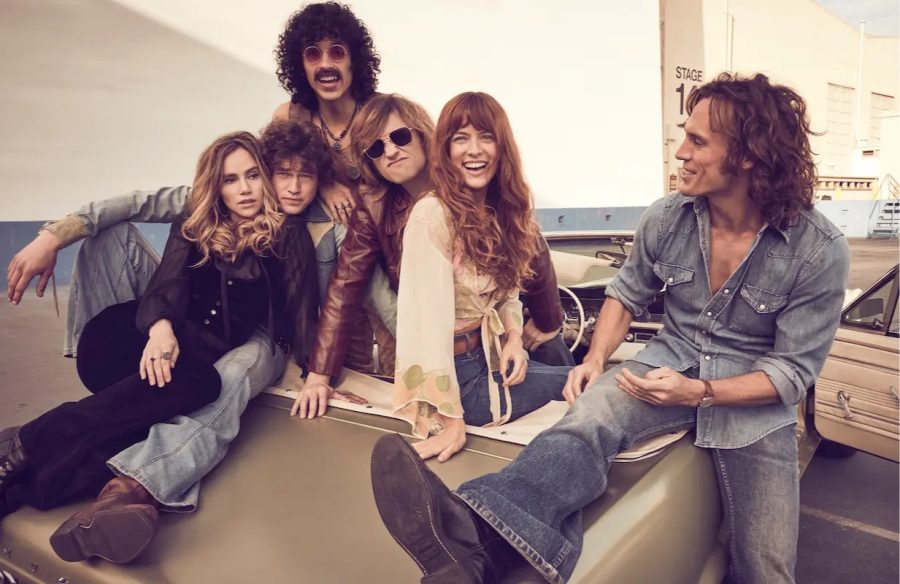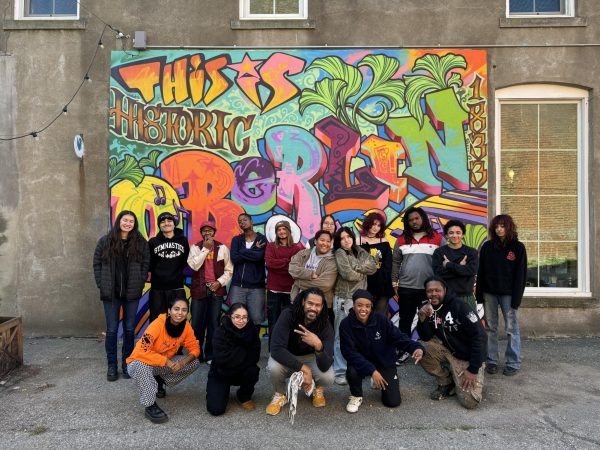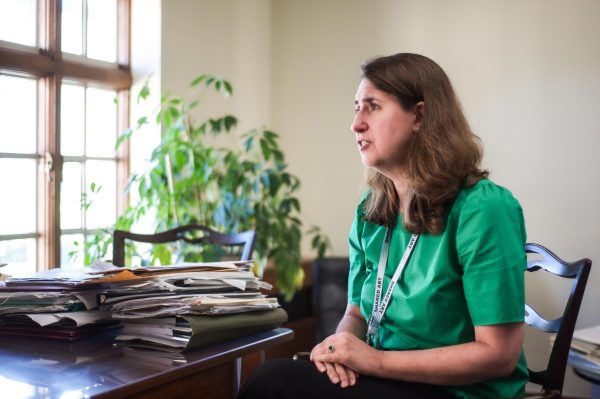Daisy Jones & The Six Captures Tiktok Obsession with ’70s Culture
The release of Daisy Jones & the Six earlier this month brought a resurgence in interest in ’70s culture.
I read Taylor Jenkins Reid’s Daisy Jones & The Six over Winter Term. The novel had dotted my social media feeds for the past three years, from BookTok to Goodreads recommendations, but I was quick to turn it down, time and time again. Ultimately, I needed a poolside read, and I figured there was nothing better than a fabricated oral history of a ’70s rock group. Admittedly, there’s an air of pretentiousness in the reluctance with which I picked up Daisy Jones in the first place, even more so with the televised adaptation. I’m happy I did, though.
The 1970s in film and literature have entranced me ever since my father introduced me to Richard Linklater’s Dazed and Confused right before I entered high school; Amy Heckerling’s Fast Times at Ridgemont High and Cameron Crowe’s Almost Famous, golden gods and all, were soon to follow. When the pandemic hit and my self-expression began to flourish,I read Armistead Maupin’s Tales of the City, which is by far the most accurate depiction of the era, given Maupin was actually writing about his own scene in the fictionalized series.
Each piece of media was distinctly its own, yet they were united by fashion, music, and colloquialisms that I just adored. From fast-paced high school drama to rock and roll, it was as if I was witnessing people I could aspire to be, drenched in that kitschy air of romanticization that inched closer and closer to fetishization.
The question that these pieces of media present is how do I, or anyone who wasn’t alive during that era, determine whether or not a piece is a good representation of a culture I did not experience firsthand.
The Guardian has published a plethora of articles since Daisy Jones started coming out, each one making some proclamation as to why the show fails to faithfully represent southern California rockstar culture. It’s criticism upon criticism: “Daisy Jones & the Six review – not even Elvis’s grandkid can save this 70s rock’n’roll saga” or “Why Amazon’s Daisy Jones & the Six is missing that star quality.”
I, too, have trouble giving Daisy Jones the same merit as any of the aforementioned pieces of media. In part, it’s because the show is a high-quality Amazon production. It doesn’t have the grainy charm where you can imagine that everyone filming it was wearing the same bell-bot-toms as the fashionable teenagers and rock stars depicted, but it’s not like Almost Famous was low-budget.
Daisy Jones, airing 45 years after it’s set, dresses its characters in outfits that look like you could find them on SHEIN. In part, Suki Waterhouse, Riley Keough, and Camila Morrone are ultimately just “nepotism babies” and look like the ideal “TikTokified”“niche Internet microcelebrity.” I know I’m not the first to say the music in the series sucks. The titular rock band’s song “The River” is a clear homage to Fleetwood Mac’s “The Chain” in both how it sounds and the way it’s filmed, but the result feels inauthentic.
There was an anticipated resurgence of ’70s culture when the Daisy Jones series came out earlier this month, particularly in the fashion realms of TikTok and Instagram, and viewers were greeted with Free People brand deals with influencers and how-to guides for the best rockstar outfits.
Interest in ’70s culture is fueled by the accessibility of clothing now. Fast fashion companies quickly generate a plethora of clothing at any one trend’s demand for cheap prices, even if they do so through corrupt business practices. Additionally, the digitization of vintage shopping has increased the convenience of purchasing outfits imbued with nostalgia.
Fashion cycles are circulating faster because of fast fashion. However, what the ’70s has to offer over many other decades is that its greater subversiveness —not only is it further back than the 1990s and Y2K, but it’s embellished with radical social movements, mindsets, and slogans that are easily commodified.
Something within me wants to gatekeep my vintage dresses, pants, and general music taste; and yet, that would only contribute to this commodification of the ’70s, making it possible for anyone to declare they were born in the wrong generation and are more of a “groupie flower child” than others.
Despite its flaws, there is still much to love about Daisy Jones. Jenkins Reid’s storytelling is phenomenal and the dynamics she produces between each and every character are enthralling. Daisy Jones can just be entertaining and plotless as Dazed and Confused is. They both play Aerosmith’s “Sweet Emotion.” It’s the Chateau Marmont in episode four versus the opening credits of high school parking lots full of cool cars and passed joints. Ultimately, TikTok can stay obsessed.








